Jul 11, 2024
•
Zach Hudson
Imagine combining the timeless elegance of classic design with the clean simplicity of modern decor. That's the magic of transitional interior design! This versatile style offers the best of both worlds, creating spaces that are sophisticated yet comfortable, refined yet welcoming.
Transitional interior design seamlessly blends traditional and contemporary styles, creating a harmonious balance that feels both timeless and modern. This style combines the comfort and warmth of traditional design with the clean lines and minimalist aesthetic of contemporary decor. It's a perfect solution for those who appreciate the richness of classic interiors but crave the fresh, uncluttered look of modern spaces.
In this comprehensive guide, we'll explore the core principles, key elements, distinguishing features, substyles, and room-specific design ideas that define transitional interior design, helping you create inviting and livable spaces. Whether you're renovating your entire home or simply refreshing a single room, you'll discover how to achieve that perfect balance between old and new, cozy and sleek, familiar and fresh. We'll delve into color palettes, furniture selection, textures, and accessories that bring transitional design to life, providing you with practical tips and inspiration to transform your living spaces into havens of timeless elegance and modern simplicity.
What is Transitional Interior Design?
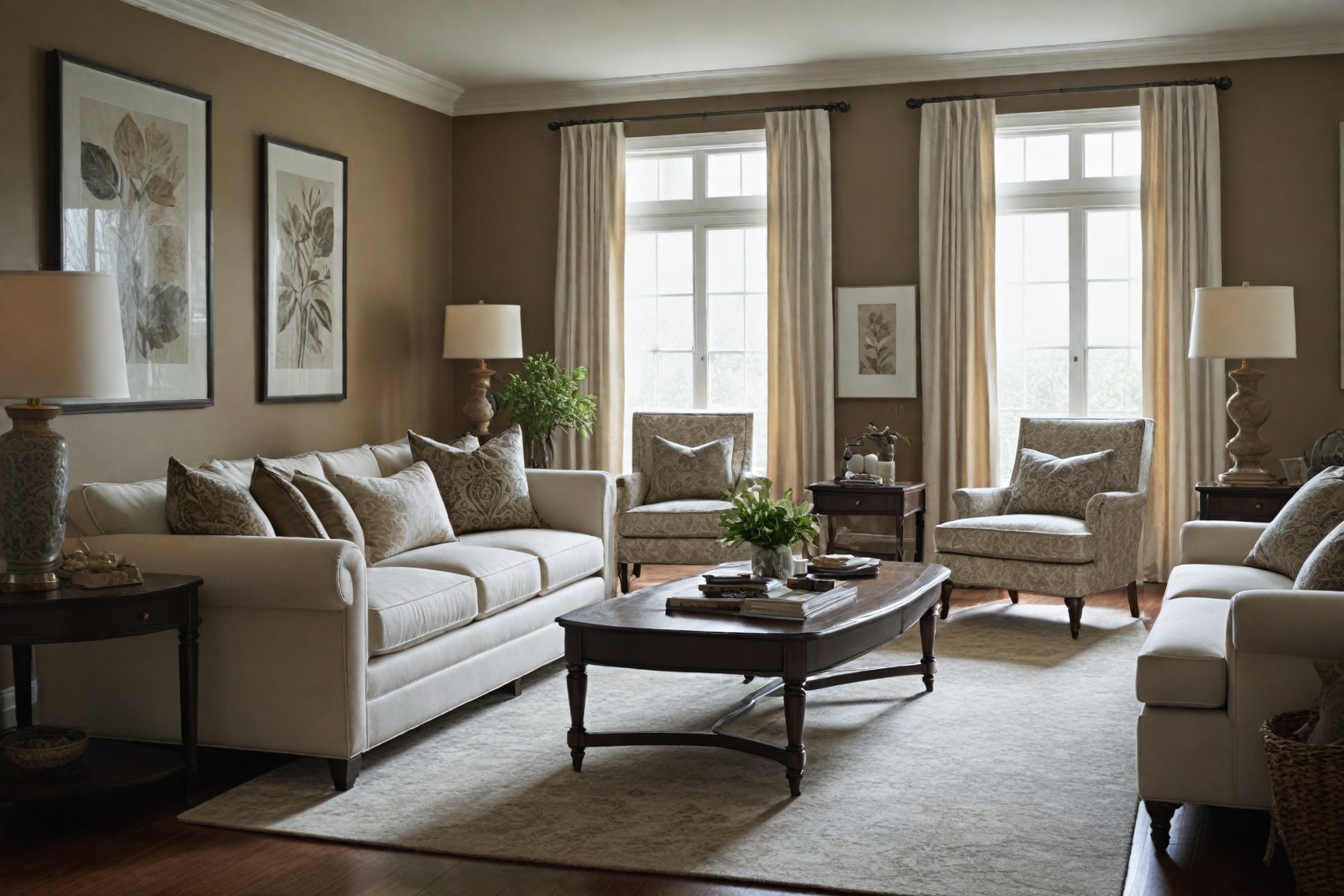
Transitional interior design combines the best elements of traditional and contemporary styles, creating a harmonious balance that appeals to a wide audience. It offers the comfort and warmth of traditional design with the clean lines and minimalist aesthetic of contemporary decor. This style blends classic and modern elements to create spaces that are both timeless and functional, making it a versatile choice for any home.
Core Principles of Transitional Design
Transitional design integrates elements from various styles while maintaining a distinct identity. It compares favorably to modern, traditional, and contemporary styles by incorporating a mix of textures, neutral color palettes, and understated elegance. Unique features include a blend of classic and contemporary furniture, balanced decor, and a focus on comfort and simplicity.
Distinguishing Features from Other Design Styles
Transitional design stands out through its balanced use of furniture, color, and overall aesthetic focus. It avoids the extremes of traditional or contemporary styles, instead opting for a blend that feels both familiar and fresh. Key features include neutral tones, a mix of materials like wood and metal, and furniture that combines traditional shapes with contemporary finishes.
Key Elements of Transitional Interior Design
Dive into the specific elements that are essential in creating a transitional interior design space, discussing how each contributes to the overall look and feel.
Neutral Color Palettes
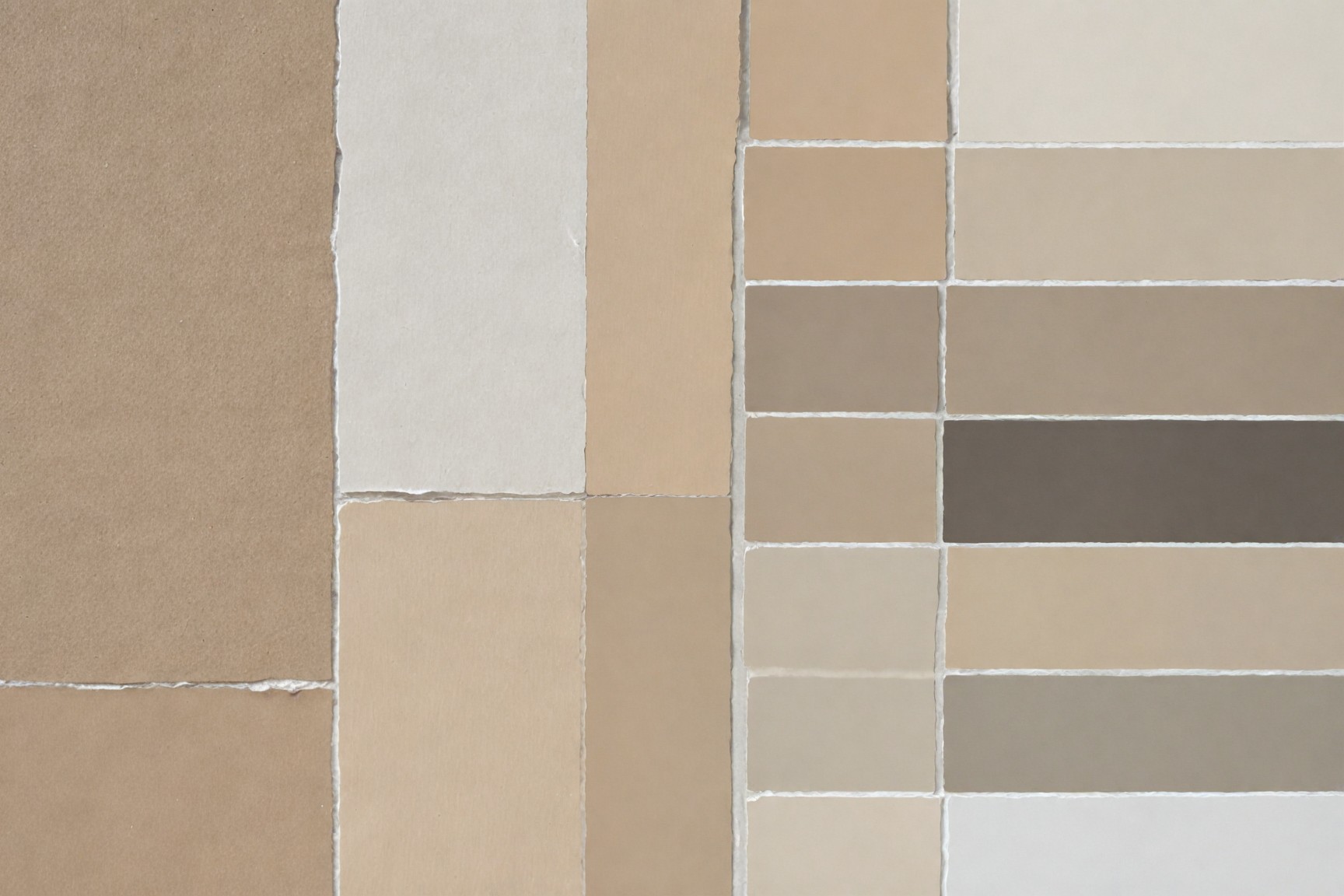
Neutral colors form the foundation of transitional design. The palette typically consists of various shades of beige, gray, and white, creating a calm and sophisticated base. These neutral tones serve as a versatile backdrop, allowing for flexibility in decor and accessories. While the overall color scheme remains subdued, subtle pops of color are often introduced through carefully chosen accessories, adding visual interest without overwhelming the neutral foundation.
Layered Textures and Materials
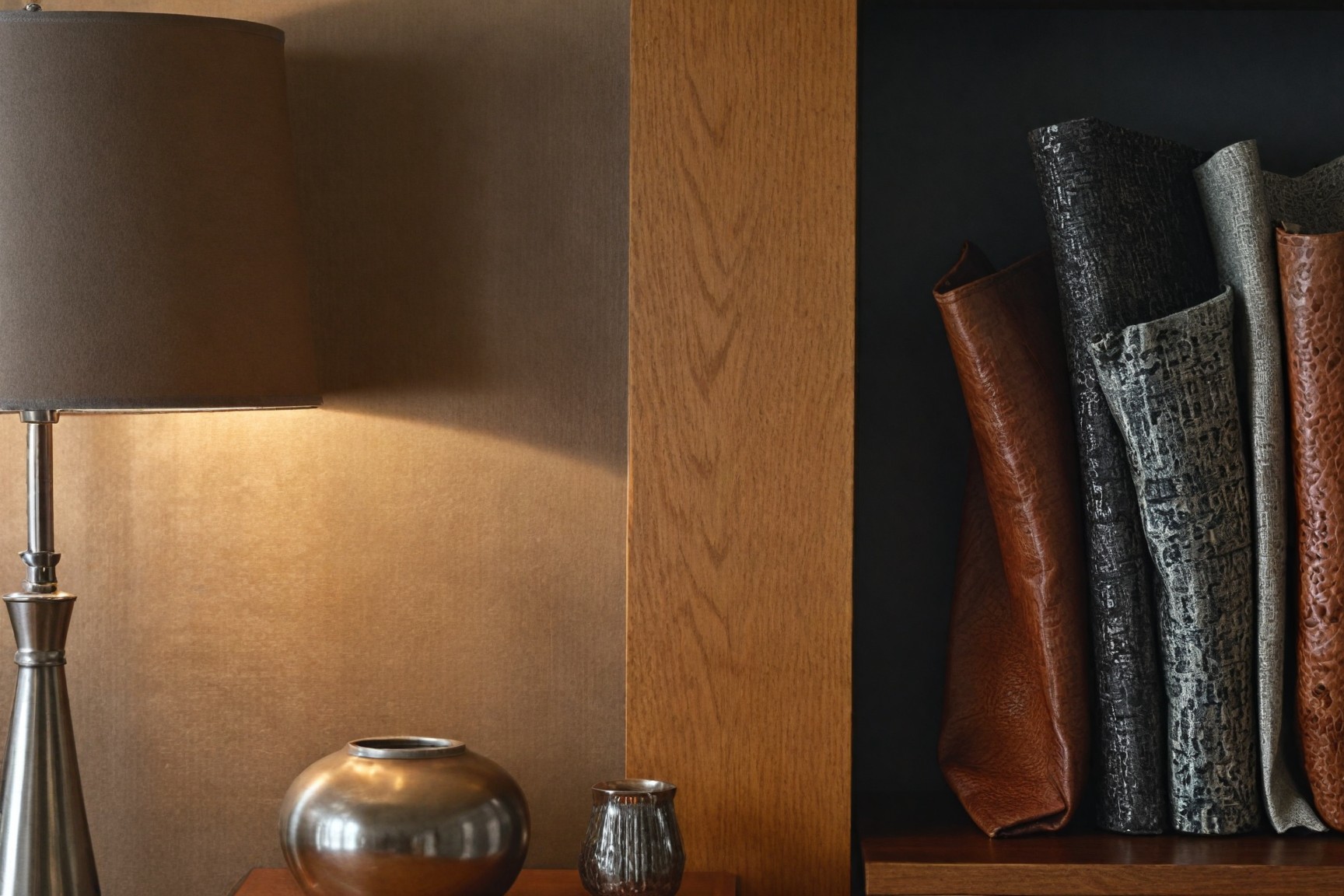
Transitional spaces are enriched by the layering of textures and materials, which adds depth and tactile diversity. This approach combines elements such as leather, wood, metal, glass, and fabric to create a rich and inviting environment. The interplay of these materials contributes to the overall aesthetic without resulting in a cluttered appearance. The careful balance of textures enhances the sensory experience of the space while maintaining a cohesive design.
Streamlined Furniture Silhouettes
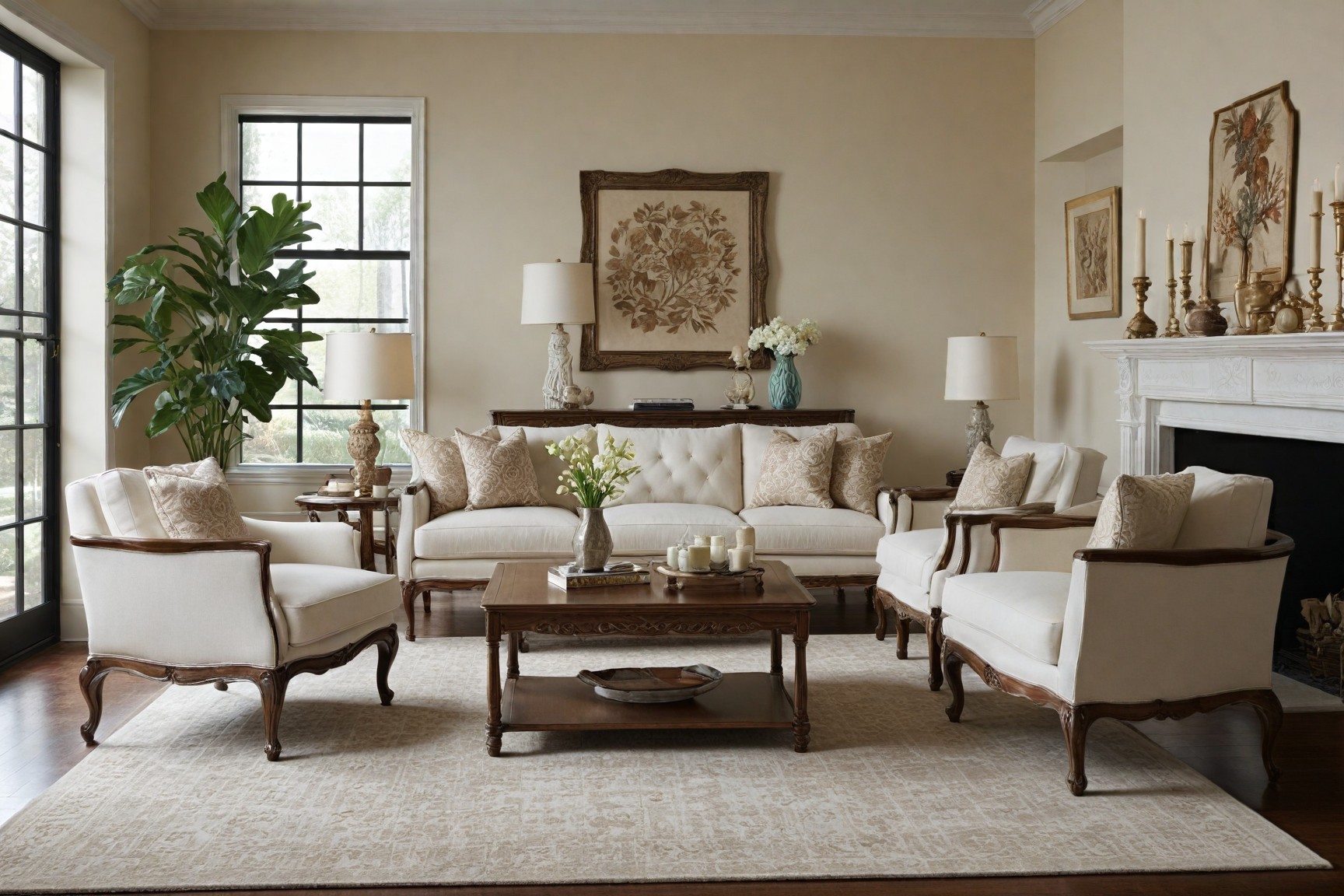
Furniture in transitional design features streamlined silhouettes that are simple yet sophisticated. These pieces blend seamlessly with more ornate elements, striking a balance between traditional and contemporary styles. The furniture typically exemplifies clean lines and minimalistic design, contributing to the transitional aesthetic. This approach to furniture selection ensures that each piece complements the overall design without overpowering the space.
Subtle Patterns and Organic Accents

Transitional design incorporates subtle patterns and organic accents to add layers of visual interest without dominating the overall design. Patterns are often introduced through textiles or decor items, while organic accents such as plants or natural materials enhance the space. These elements contribute to the depth and character of the room while maintaining the balanced and harmonious feel characteristic of transitional design.
Emphasis on Functionality and Comfort
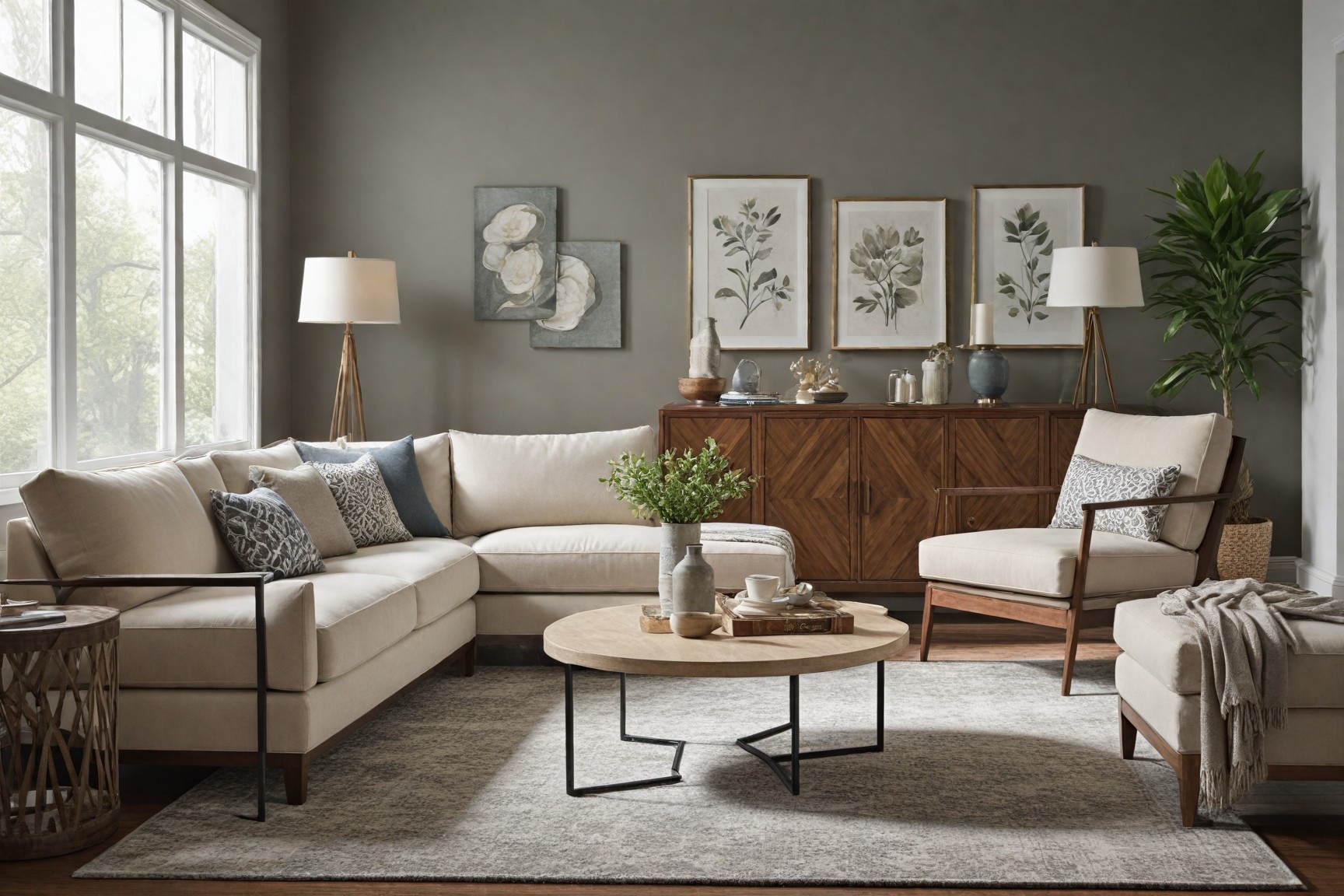
A key aspect of transitional design is its focus on both functionality and comfort. This approach results in living spaces that are not only aesthetically pleasing but also highly usable. Furniture and decor items are selected for their ability to enhance everyday living while maintaining a cohesive design. The emphasis on comfort ensures that transitional spaces are inviting and livable, striking a perfect balance between style and practicality.
Substyles of Transitional Interior Design
Explore different substyles within transitional design, each bringing its unique twist to the foundational principles.
Transitional Farmhouse

The transitional farmhouse style combines rustic elements with a refined aesthetic. This substyle blends the warmth and charm of traditional farmhouse decor with the clean lines and sophistication of modern design. It features a harmonious mix of reclaimed wood, neutral colors, and sleek finishes. Transitional farmhouse interiors often showcase a balance between vintage and contemporary pieces, creating spaces that feel both cozy and polished. The color palette typically includes warm neutrals, soft whites, and muted earth tones, complemented by natural textures and materials.
Transitional Modern
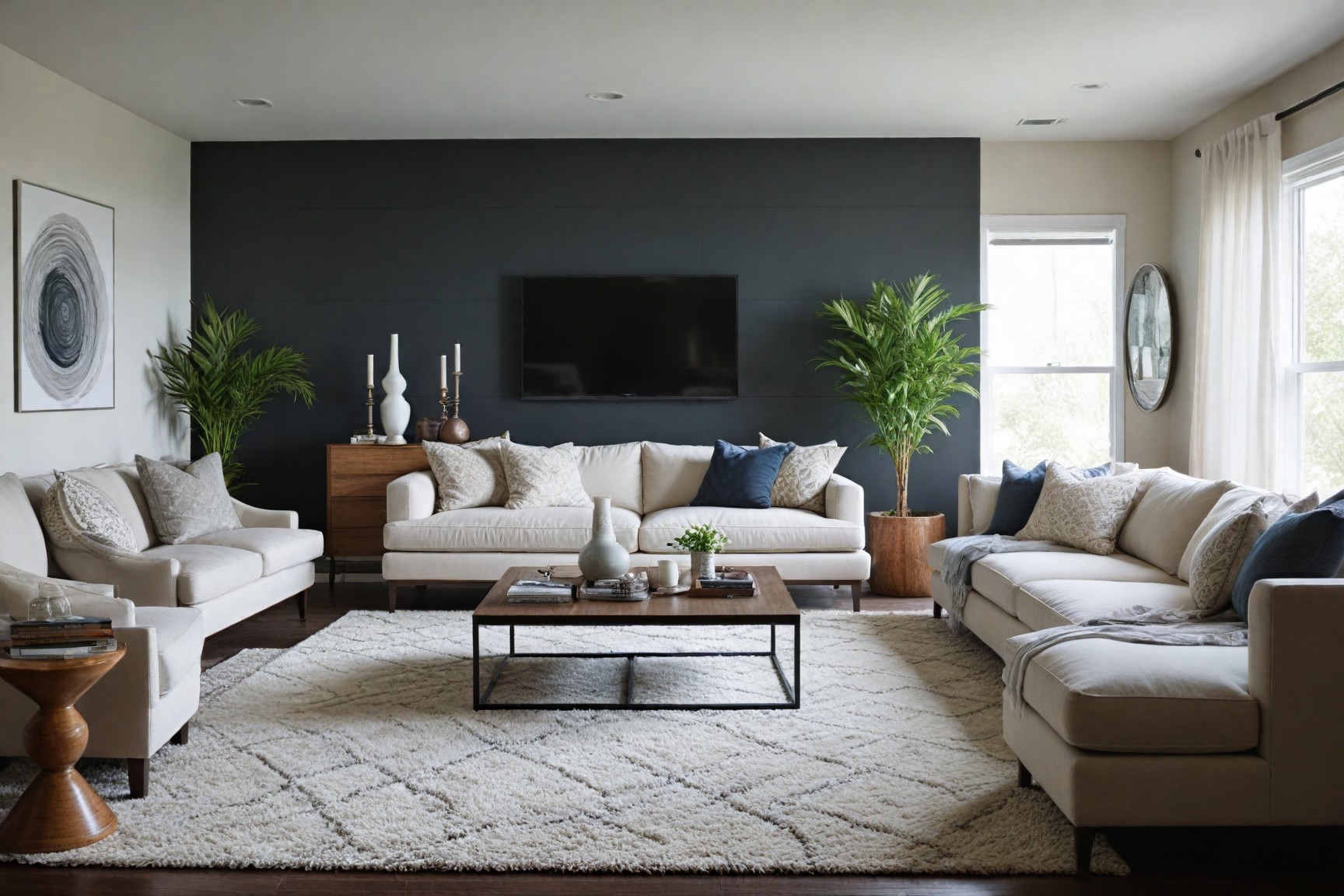
Transitional modern design integrates modern minimalism into a traditionally transitional framework. This substyle emphasizes clean lines, neutral palettes, and minimal ornamentation to achieve a sleek and contemporary look. It combines the simplicity and functionality of modern design with the comfort and warmth of transitional style. Transitional modern interiors feature streamlined furniture with subtle traditional influences, creating spaces that feel current yet timeless. The color scheme often leans towards cool neutrals, with occasional pops of bold color used sparingly for visual interest.
Transitional Coastal
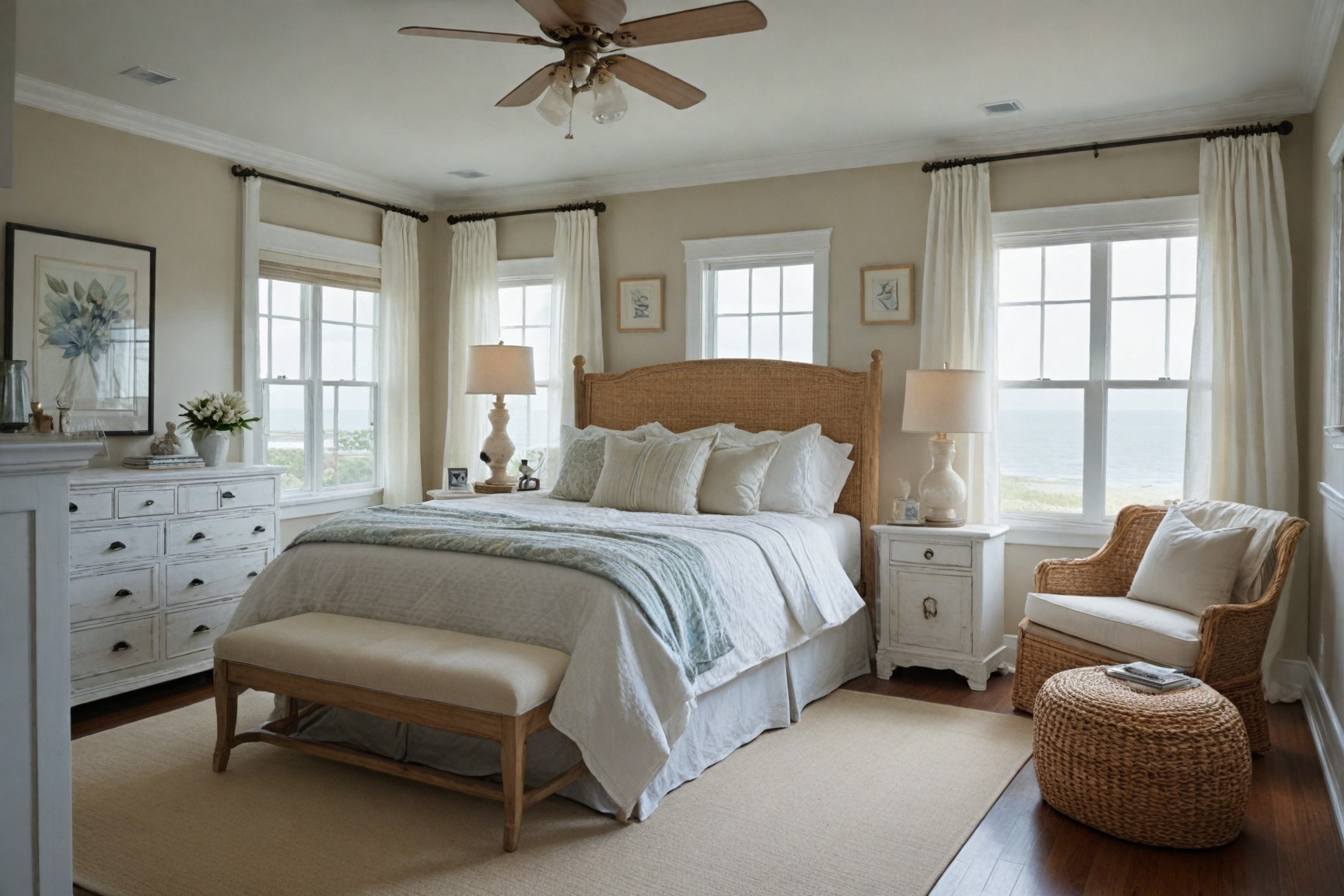
Transitional coastal style adapts coastal themes to fit within a transitional design framework. This substyle softens nautical elements with understated, sophisticated furnishings, creating a serene and elegant space. It incorporates light colors, natural textures, and subtle coastal accents to evoke a seaside atmosphere without resorting to clichéd beach motifs. Transitional coastal interiors often feature a palette of soft blues, sandy beiges, and crisp whites, complemented by natural materials like jute, driftwood, and sea glass. The overall effect is a refined interpretation of coastal living that balances relaxation with sophistication.
Transitional Industrial
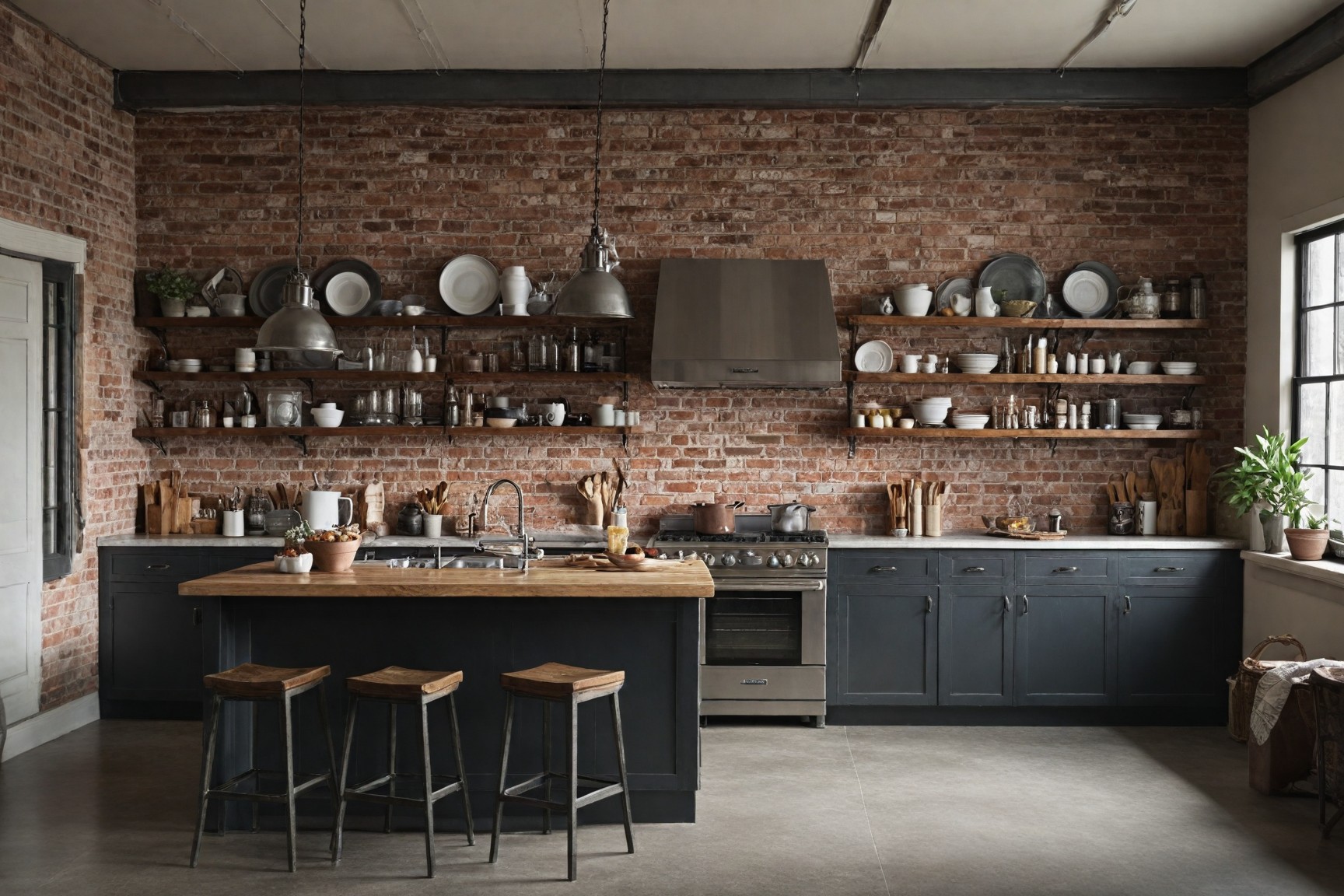
The industrial transitional style melds raw industrial elements with softer, more traditional furnishings. This substyle combines the rugged aesthetic of industrial design with the comfort and refinement of transitional interiors. It features exposed architectural elements like brick walls and metal fixtures, balanced by plush upholstery and warm wood tones. Transitional industrial spaces often showcase a mix of materials, including metal, wood, leather, and concrete, creating a dynamic and edgy environment that still feels inviting. The color palette typically includes deep neutrals, rich earth tones, and metallic accents.
Transitional Eclectic
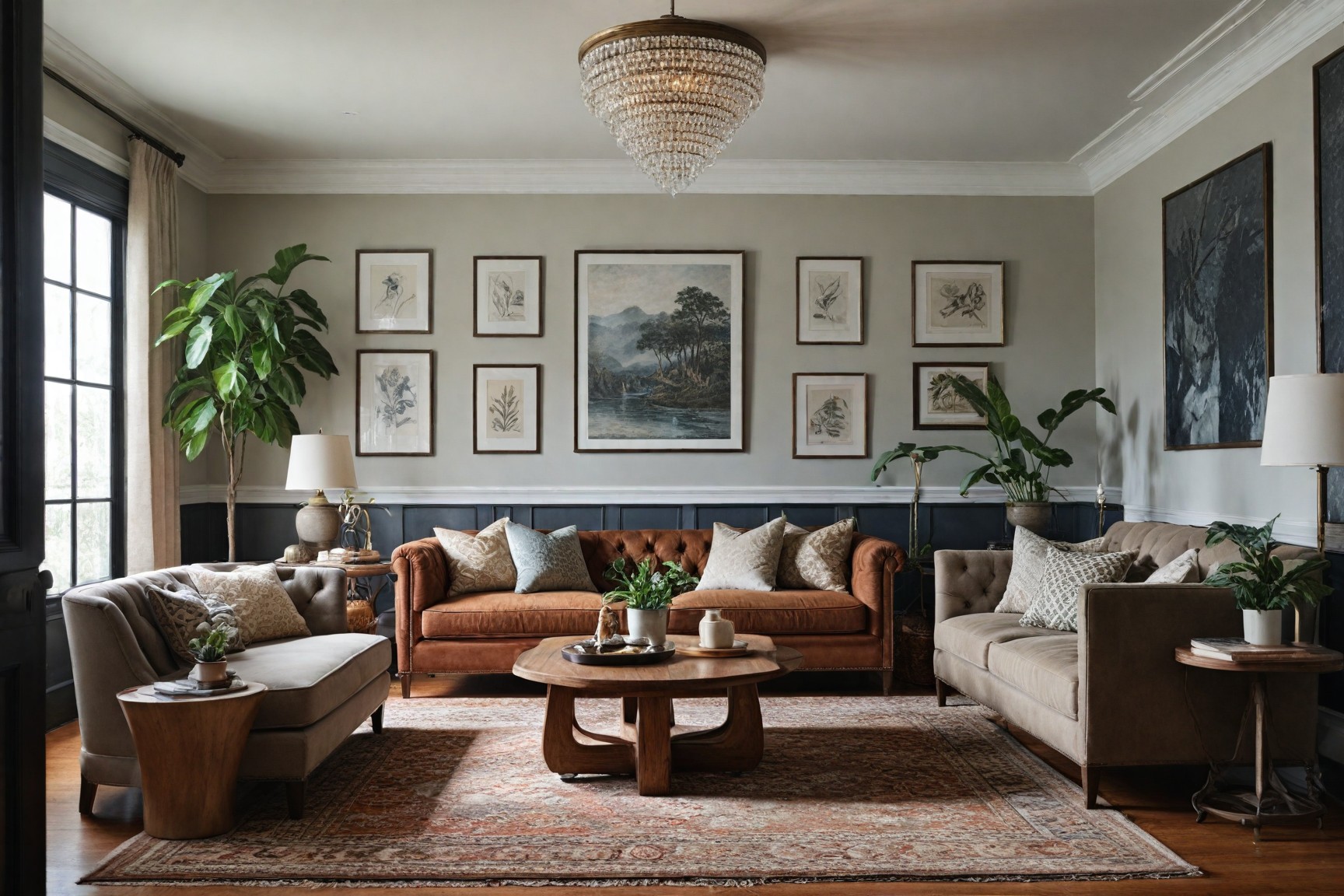
Transitional eclectic design incorporates diverse elements cohesively within a transitional framework. This substyle respects the balance and harmony typical of transitional spaces while introducing various styles and textures. It allows for more personal expression and creativity, combining pieces from different design eras and styles in a harmonious way. Transitional eclectic interiors often feature a curated mix of furniture, artwork, and accessories that reflect the homeowner's unique tastes and experiences. While maintaining a neutral base, this substyle embraces bolder color accents and pattern mixing, creating spaces that are both sophisticated and full of character.
Room by Room Transitional Interior Design Ideas
Provide actionable design ideas for implementing transitional interior design principles in various rooms of a home.
Living Room
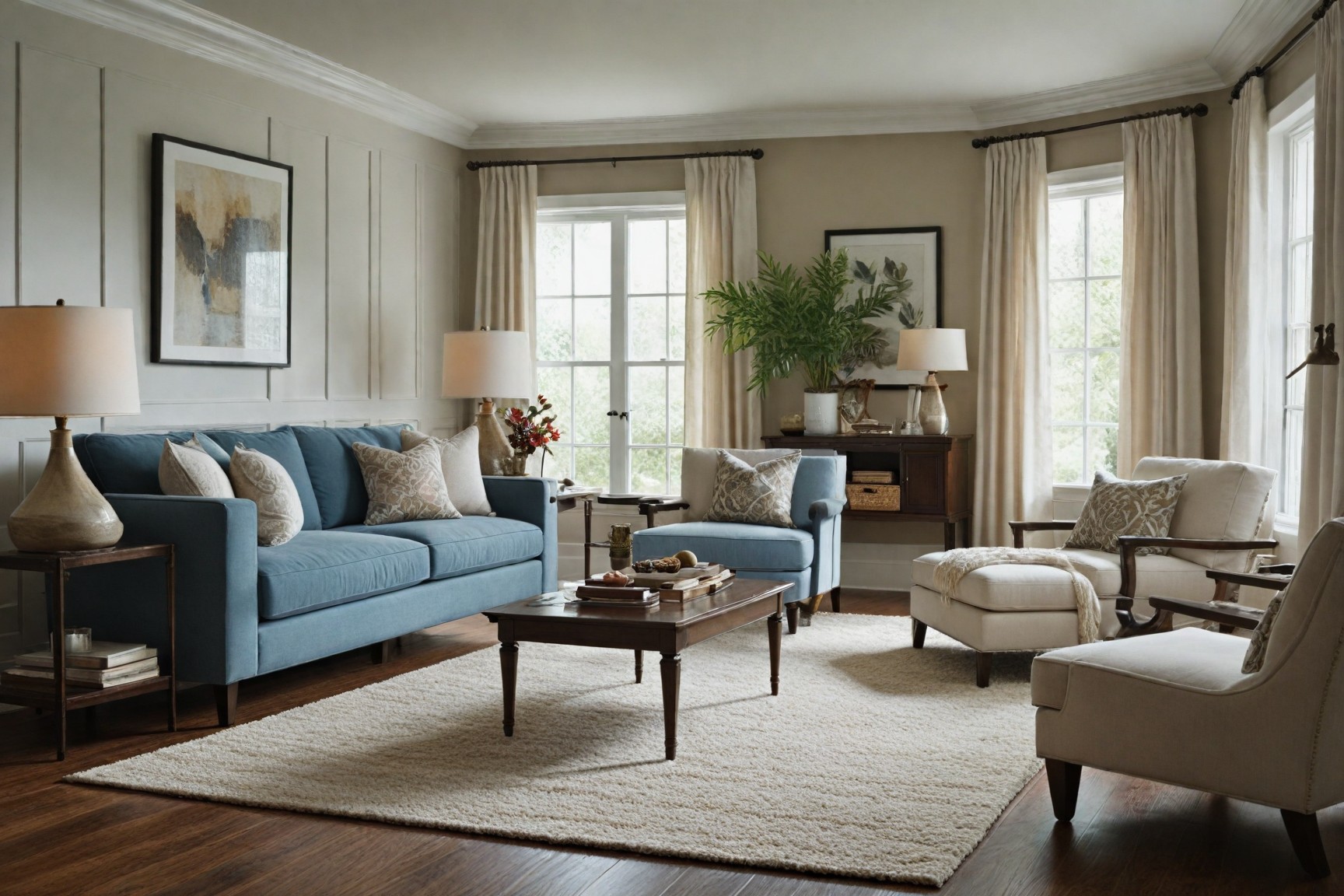
Design a welcoming and refined transitional living room by selecting a mix of traditional and modern furnishings. Start with a neutral palette, incorporating shades of beige and gray to create a calm, sophisticated atmosphere. Opt for furniture pieces that blend classic shapes with contemporary finishes, such as a sleek sofa paired with an antique coffee table. Add layered textures through throw pillows and blankets, and use artwork and decorative accents that balance elegance with simplicity.
Bedroom
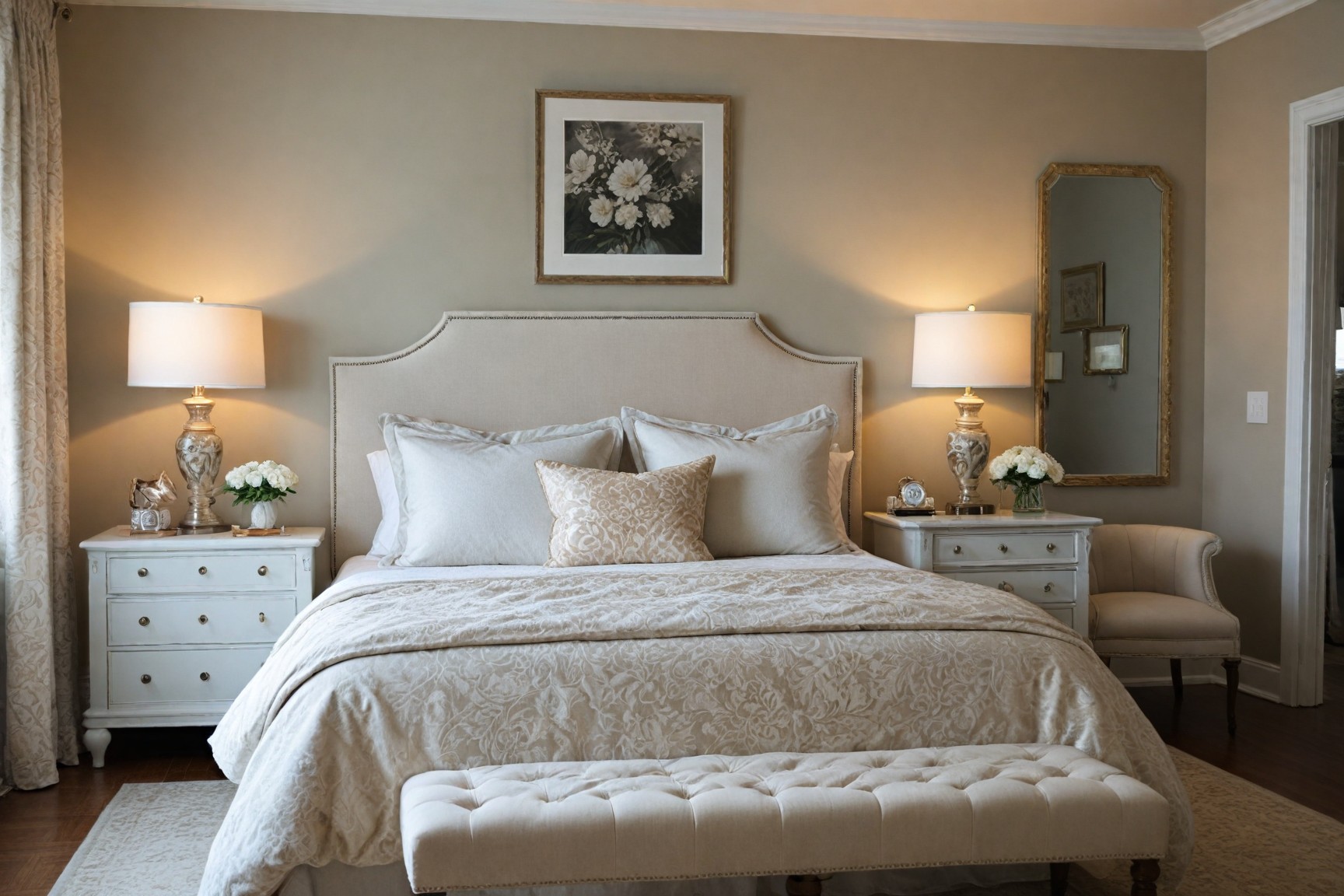
Create a serene transitional bedroom using soft colors, plush textiles, and elegant furnishings. Choose a color palette of soft blues, grays, and whites to promote relaxation. Incorporate a mix of traditional and contemporary furniture, such as an upholstered headboard with clean lines, complemented by vintage bedside tables. Use layered bedding with a variety of textures, and add a touch of luxury with silk or velvet throw pillows. Lighting should be soft and inviting, with options for both ambient and task lighting.
Kitchen
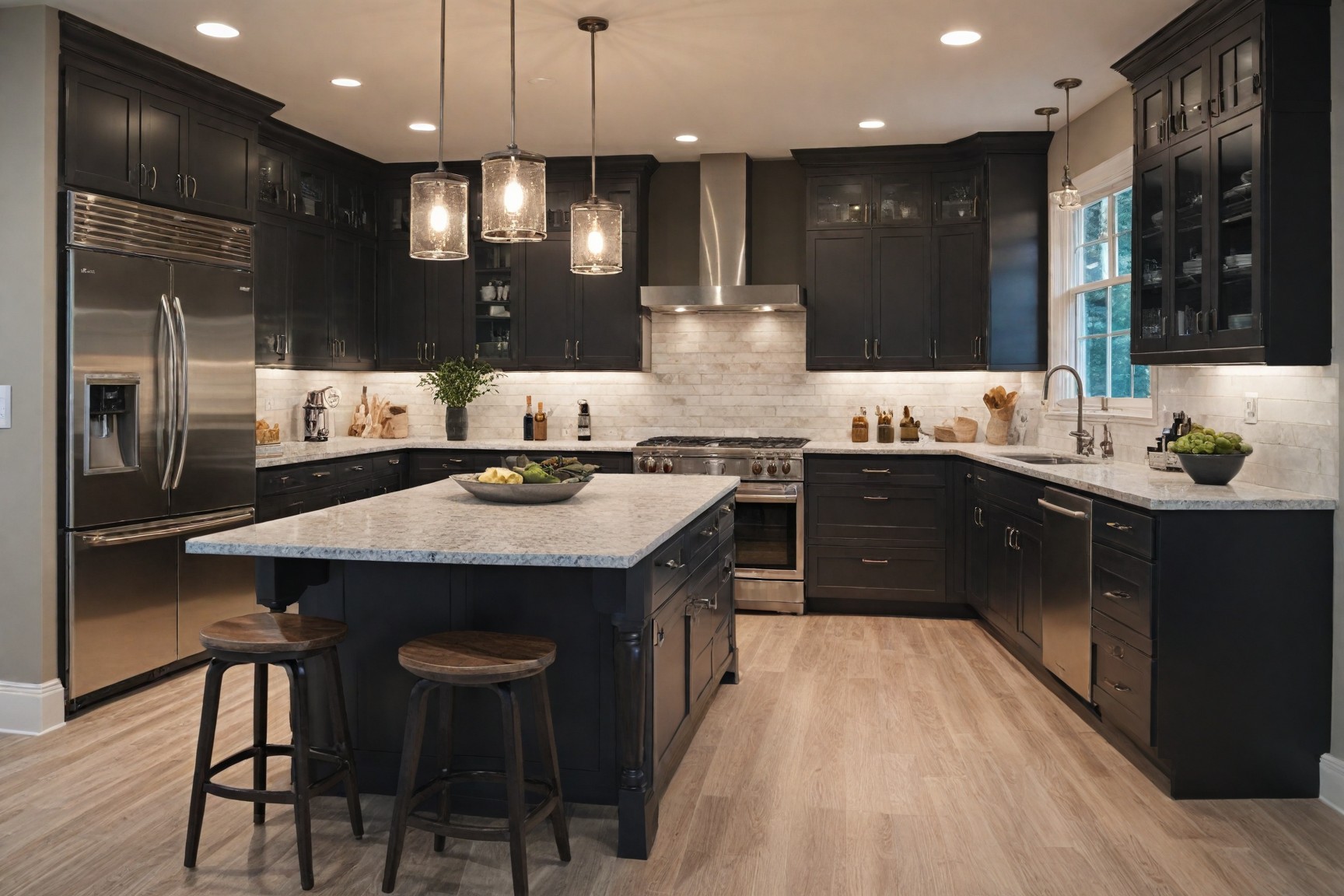
Blend modern amenities with classic aesthetics in a transitional kitchen. Focus on cabinetry, countertops, and fixtures that combine sleek designs with timeless elements. Use shaker-style cabinets painted in neutral tones, paired with quartz or marble countertops. Incorporate stainless steel appliances for a modern touch, and add classic elements like a farmhouse sink or vintage-style lighting. The overall look should be clean and functional, with a touch of elegance.
Bathroom
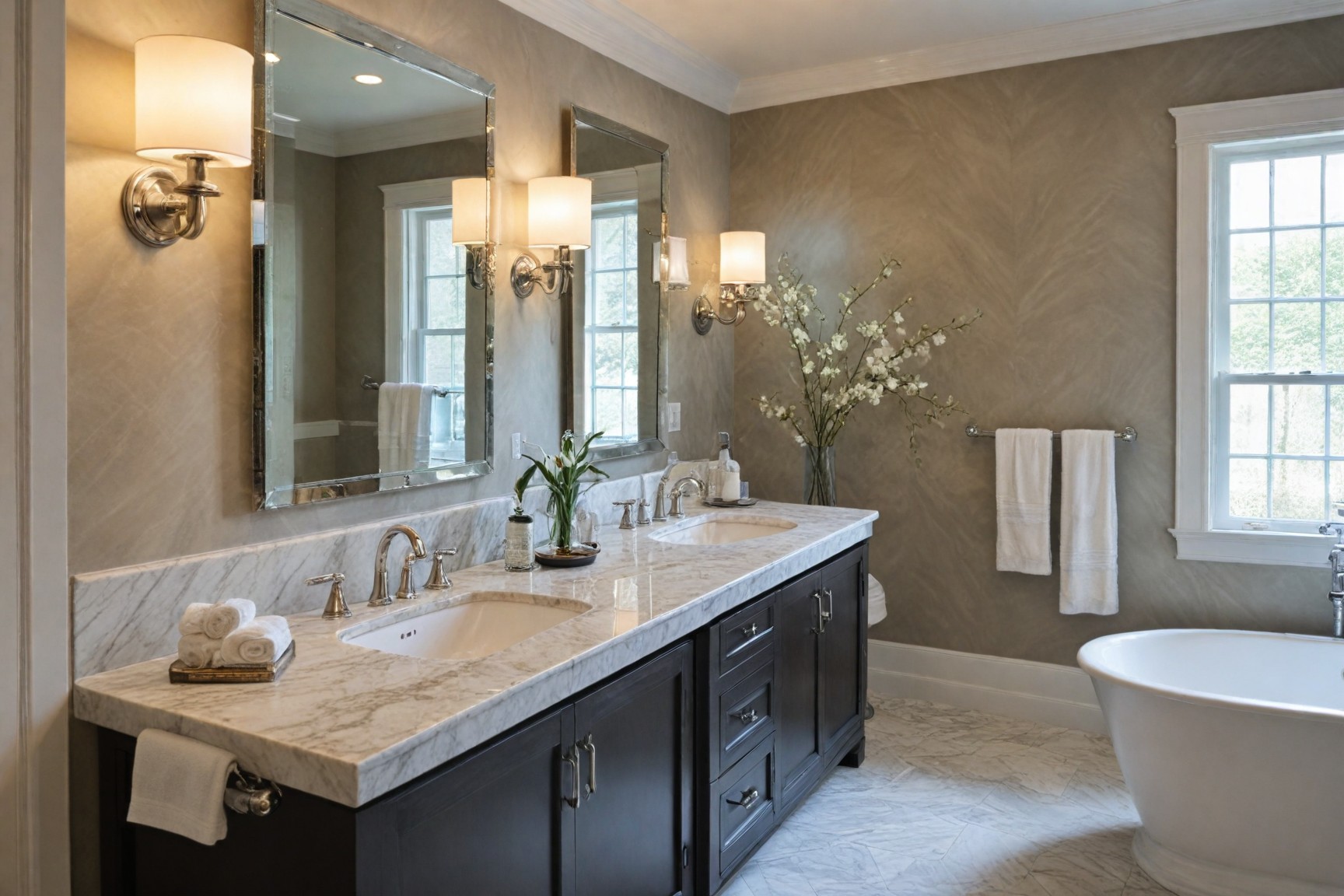
Design a transitional bathroom by combining modern fixtures with timeless touches. Use elements like marble countertops, elegant lighting, and contemporary faucets to create a functional yet stylish space. Choose a neutral color palette with white or light gray tiles, and add warmth with wooden accents or vintage-style mirrors. The overall look should be clean, elegant, and inviting.
Dining Room
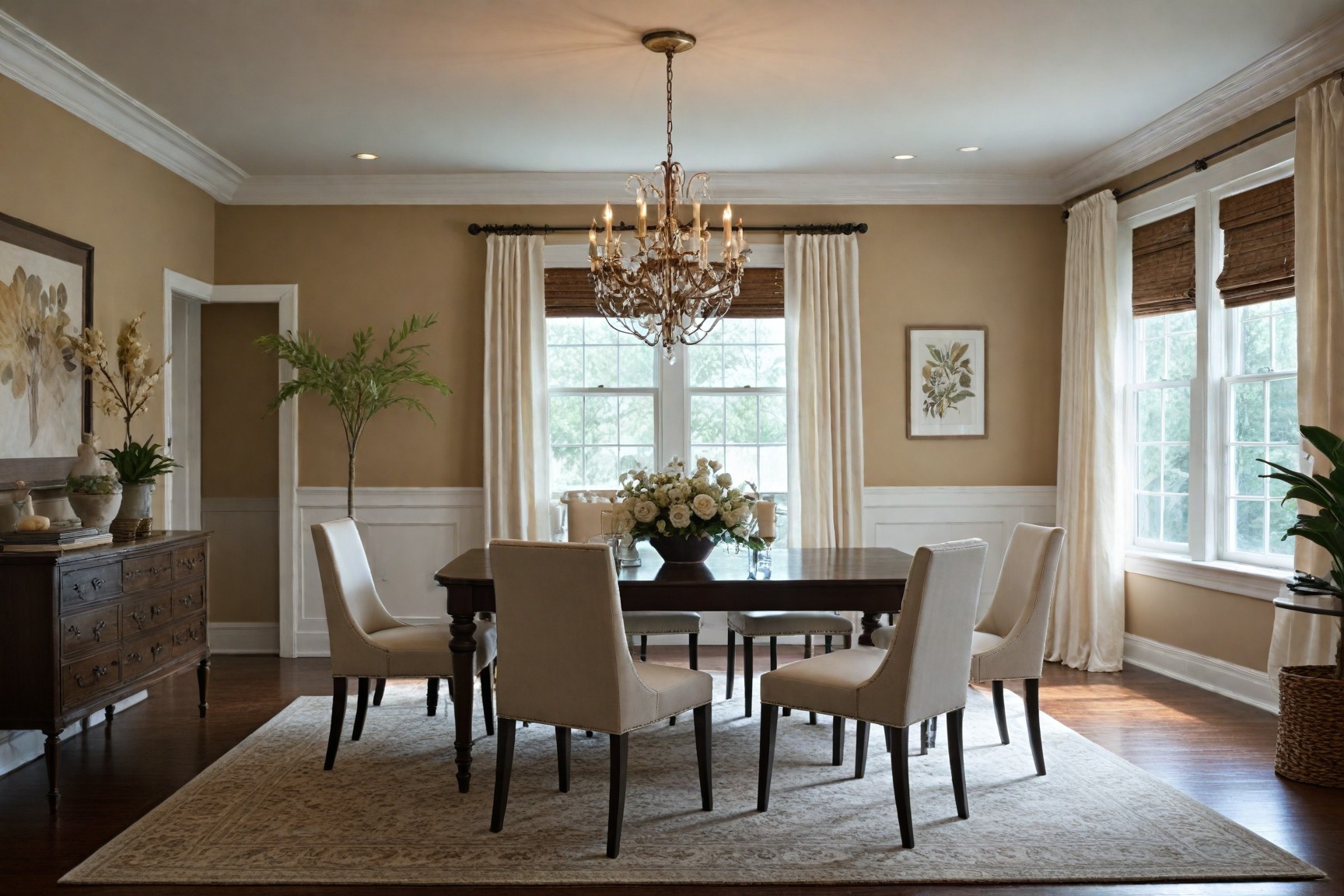
Achieve a transitional style in the dining room by selecting a mix of modern and traditional furniture. Incorporate a classic dining table with contemporary chairs, and use lighting and decor to enhance the space. Choose a neutral color palette and add interest with a statement chandelier or bold artwork. The dining room should feel elegant yet comfortable, perfect for both formal dinners and casual gatherings.
Home Office
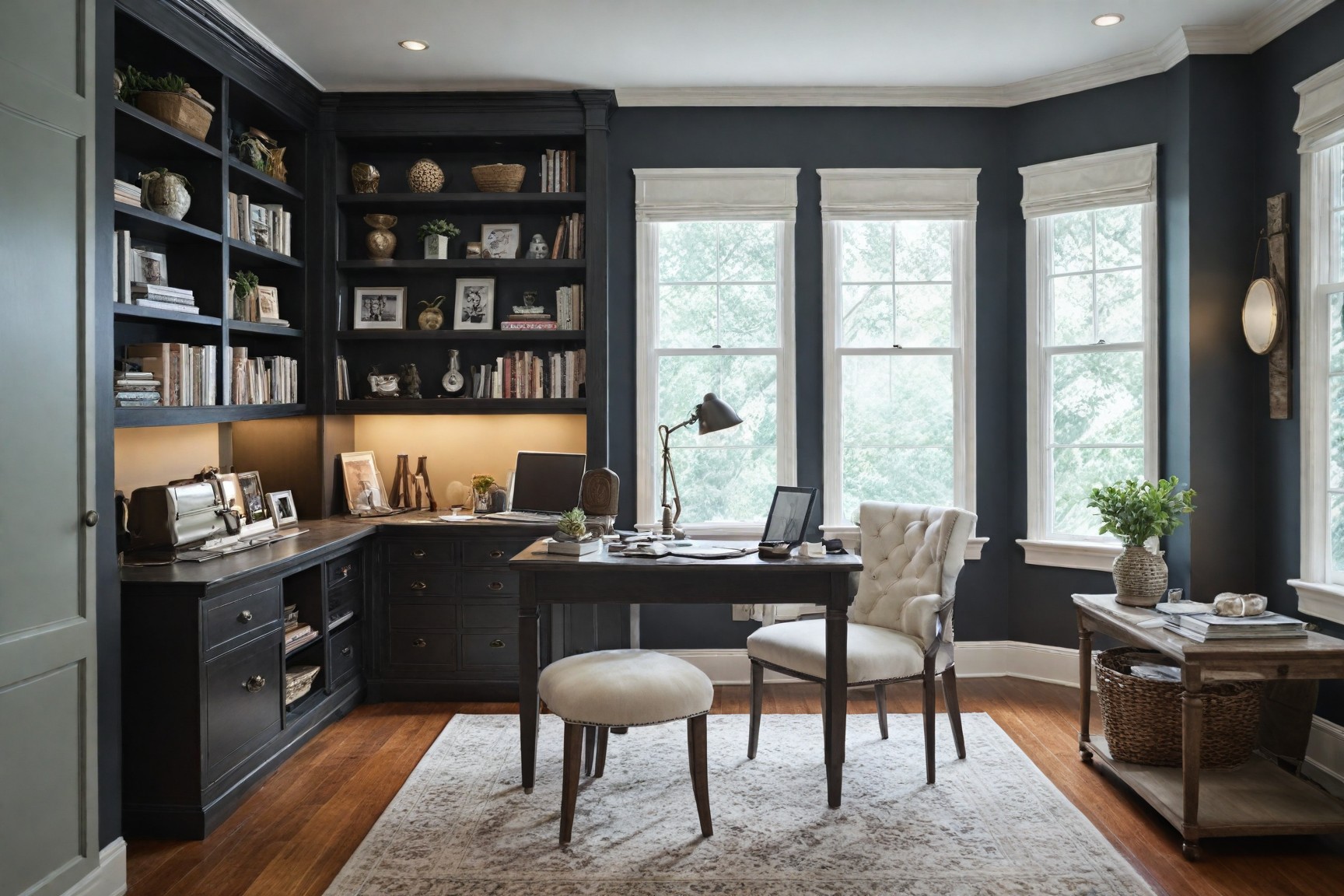
Create an efficient yet welcoming transitional home office by blending modern and traditional design elements. Use a classic desk with contemporary storage solutions, and incorporate stylish yet functional decor. Choose a neutral color palette and add interest with artwork or decorative accents. The home office should be a space where you can work efficiently while enjoying a stylish and comfortable environment.
Why Choose Transitional Interior Design?
Transitional interior design offers a unique blend of traditional and contemporary elements, making it a highly flexible and appealing choice for many homeowners. Here are some key benefits:
Versatility and Adaptability
Transitional design stands out for its versatility. It easily adapts to various home architectures and personal styles, allowing for seamless updates over time. This adaptability ensures that your home can evolve with changing tastes and trends without needing a complete redesign.
Timeless Appeal
One of the significant advantages of transitional design is its timeless appeal. By blending classic and modern elements, it creates a look that never feels outdated. This balance ensures that your interiors remain stylish and relevant, regardless of shifting trends.
Easy to Update and Modify
Transitional design is inherently flexible, making it easy to update and modify as trends change. This means you can keep your space fresh and current with minimal effort, incorporating new elements without a complete overhaul.
Broad Demographic Appeal
This design style appeals to a broad demographic, making it an excellent choice for homes with diverse occupants or for those looking to attract a wide range of buyers. Its balanced approach satisfies a variety of tastes and preferences, making it universally appealing.
Balance of Comfort and Sophistication
Transitional design strikes a unique balance between comfort and sophistication. It creates inviting spaces that are elegant yet cozy, perfect for both everyday living and entertaining guests. This balance enhances the overall livability and aesthetic appeal of your home.
Mastering Transitional Interior Design
Transitional interior design offers a harmonious blend of traditional and contemporary elements, making it a versatile and timeless choice. By balancing comfort and sophistication, this style adapts easily to changing trends and personal preferences. Whether you're drawn to its adaptability or its broad appeal, transitional design can transform your living spaces into inviting, elegant environments.
Transform Your Home with Deft Imagine
Unlock the full potential of your home with Deft Imagine, the premier AI-powered interior design platform. With Deft Imagine, you can effortlessly visualize and incorporate transitional design elements, making it easier than ever to shop for and create the perfect interiors. Whether you're refreshing a single room or transforming your entire home, Deft Imagine provides the tools and inspiration necessary to bring your transitional visions to life.
